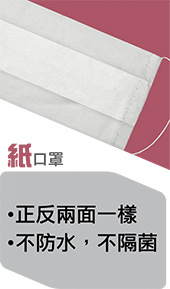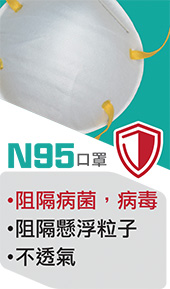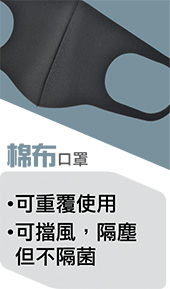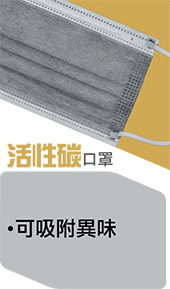
Many people consider wearing a surgical mask is one of the simple and effective ways to protect themselves against the covid-19 virus. Do you know the differences among the different types of masks available on the market?
Not all masks are made the same!


Paper Face Mask
- Made of paper
- Can only block splashes of droplets
- Non-waterproof
- Does not offer sufficient protection against bacteria or virus

N95 Masks
- 3D
- Effective in filtering more than 95% of Non-oily suspended particles
- Mediocre breathability; not recommended for extended uses unless for healthcare practitioners in close contact of highly contagious patients or in areas with extremely poor air quality

Cotton Face Masks
- Washable and reusable
- Not designed for disease prevention
- Mainly for filtering pollens, dusts, and other allergens

Charcoal Face Mask
- Mainly used for its deodorizing property
- Not designed for disease prevention

Surgical Masks
- Suitable for regular daily use
- Typically made of 3-ply non-woven material with a melt-blown fabric inner filter.
- Effective in filtering bacteria and virus and preventing droplet-borne diseases
- Better breathability than N95 masks
- Should be tested to confirm compliances of international standards such as the ASTM F2100 specification, which requires a minimum Bacterial Filtration Efficiency of 95%


